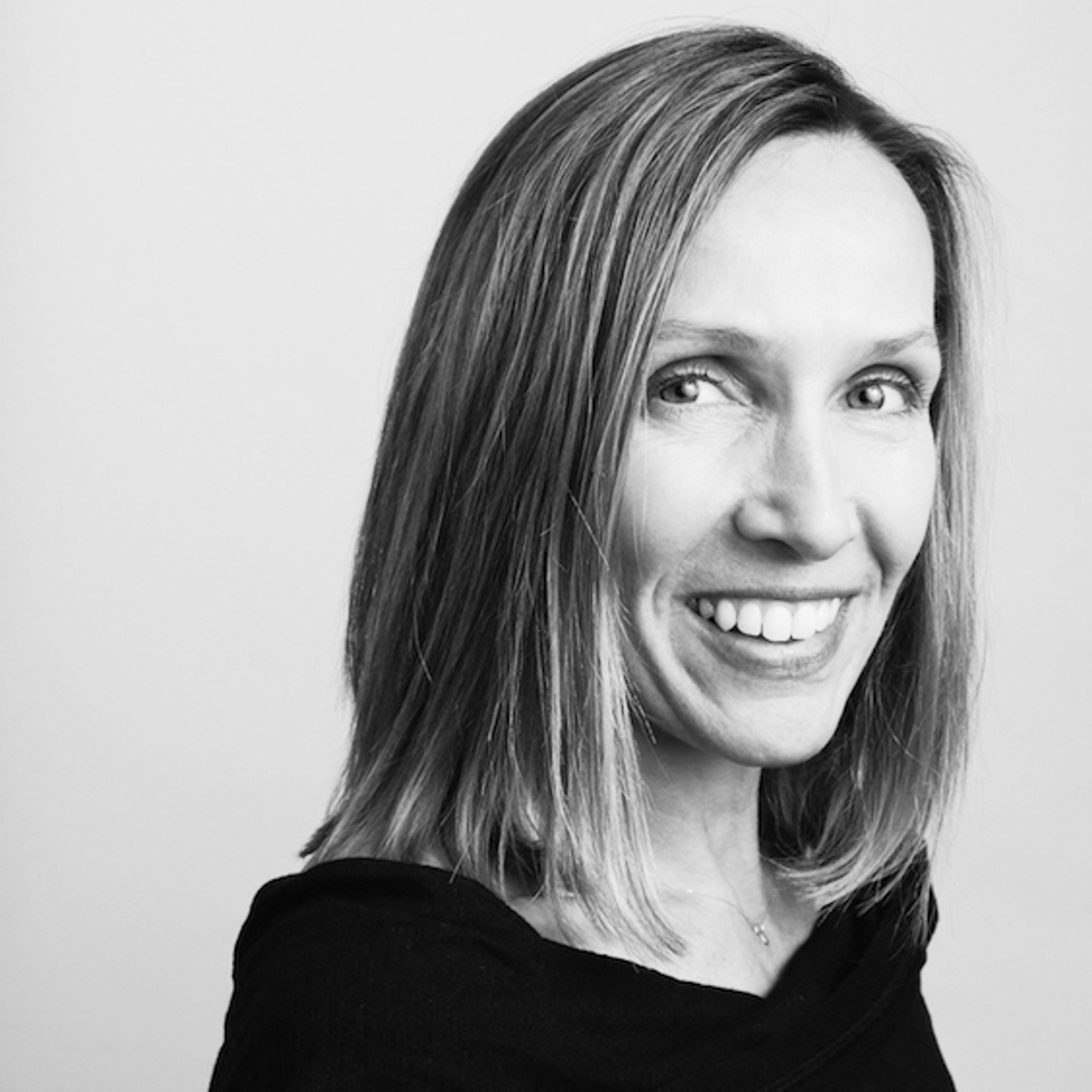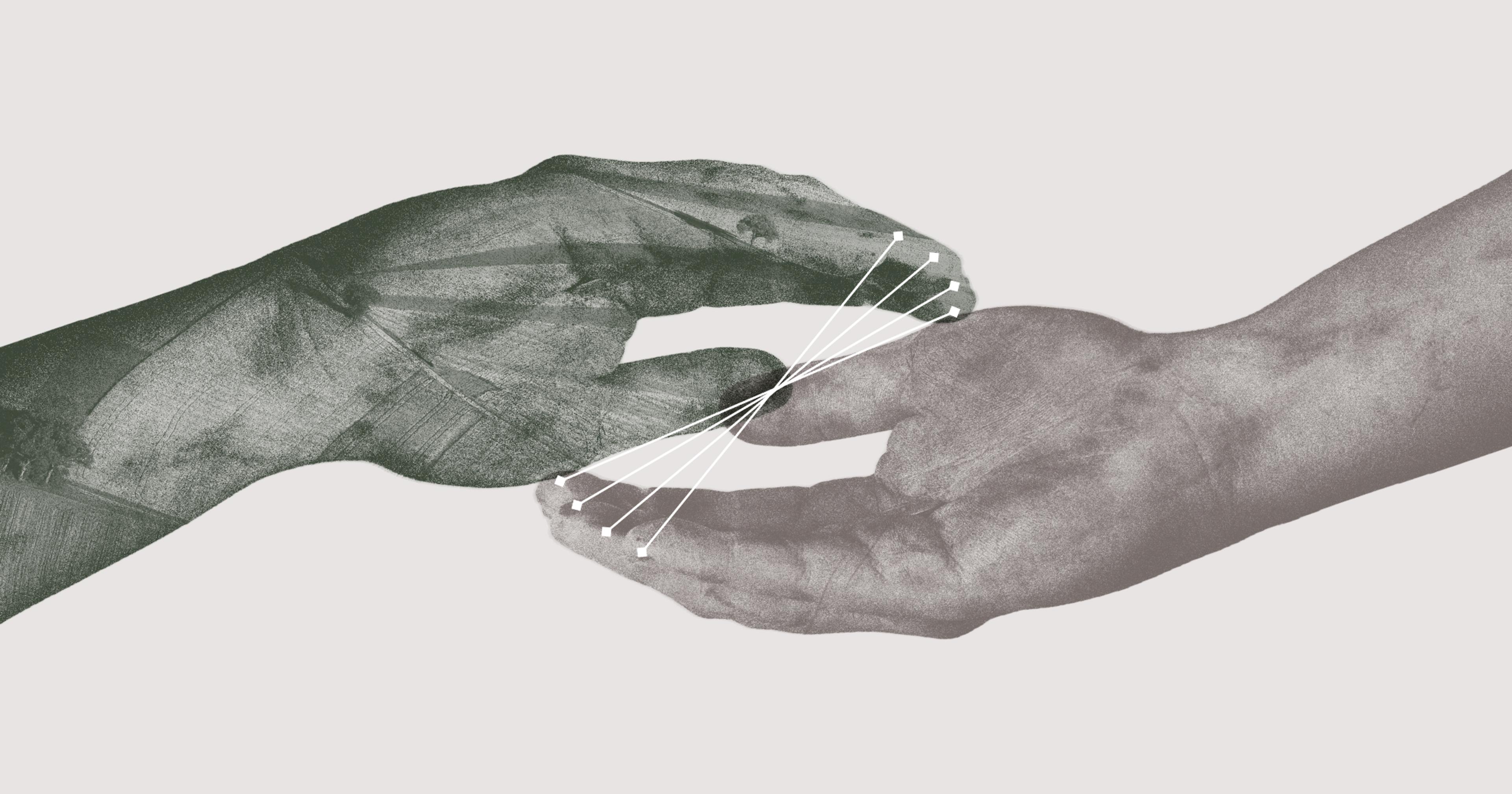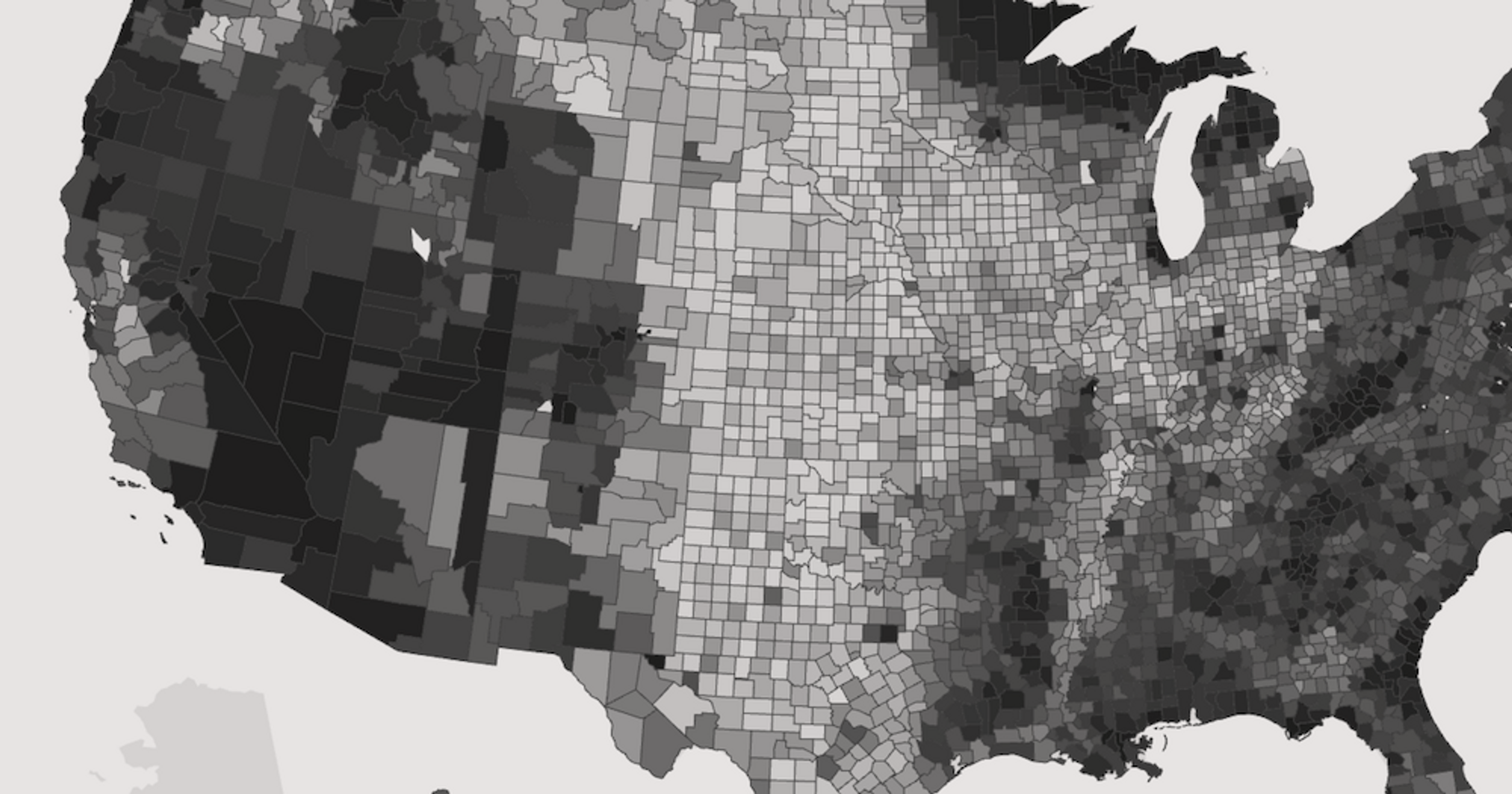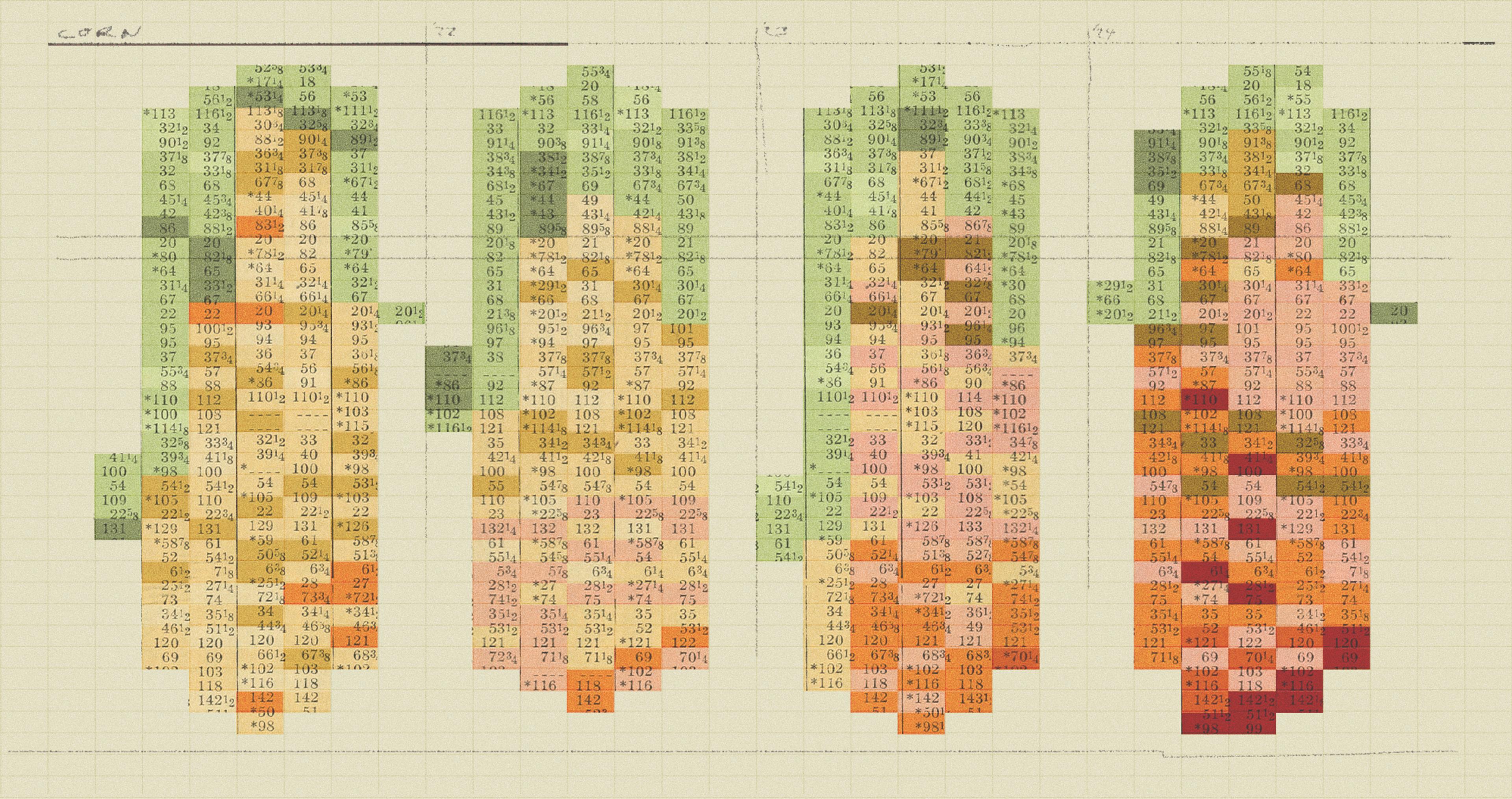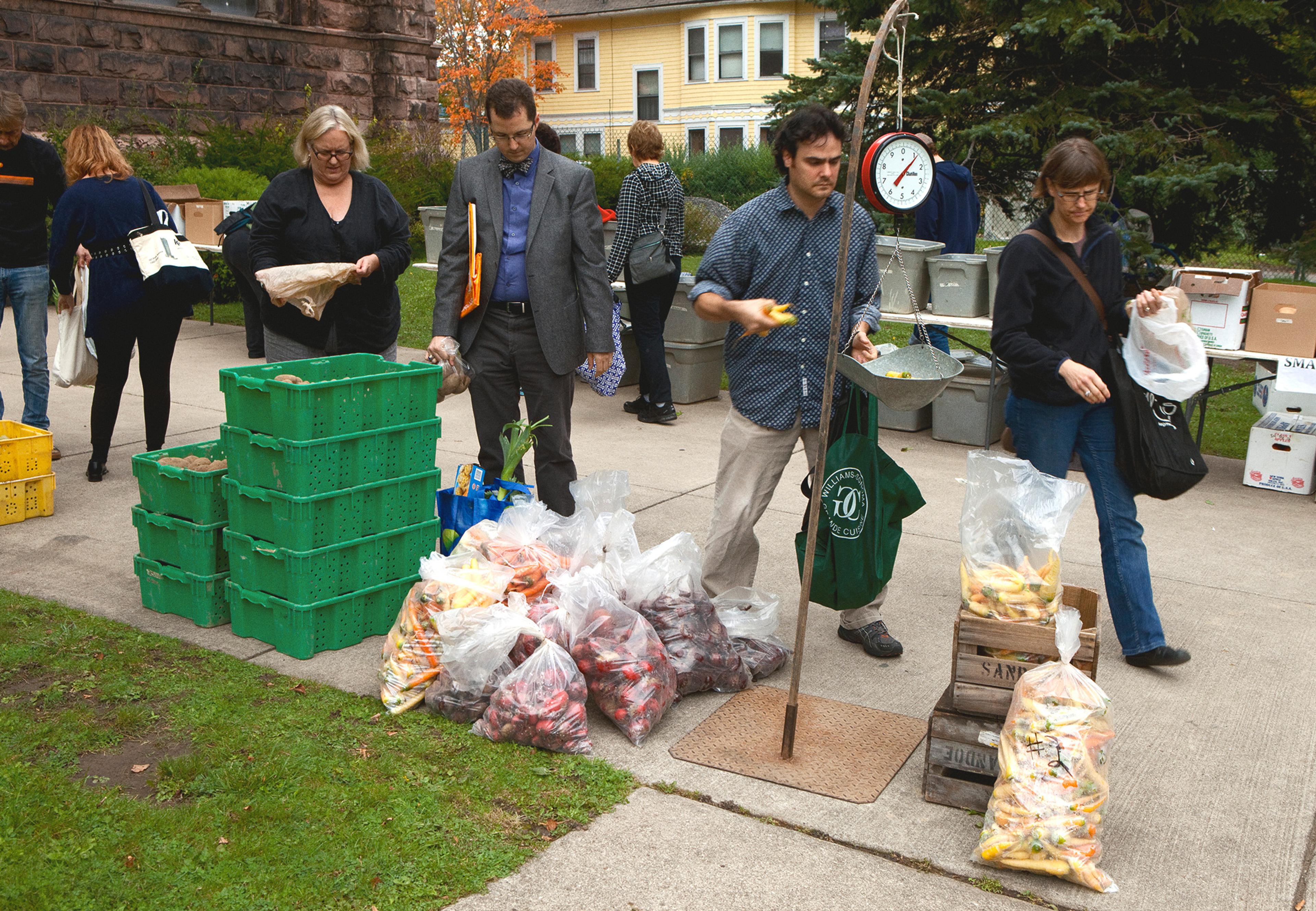One Maryland-based program is addressing farmland access issues by connecting small, would-be farmers with unused plots of private land.
When Niyi Balogun arrived in Maryland from his native Nigeria in 2018, he brought with him 12 years of farming experience. He loved working the land and couldn’t imagine doing anything else in his new home. But living just outside the D.C. beltway, he didn’t believe it was possible. With the help of his wife, Tope, however, Balogun learned of an initiative called LandLink, sponsored by The Montgomery Countryside Alliance. Something of a matchmaking service, LandLink helps landowners lease or donate land to aspiring and experienced farmers alike.
Today, Niyi Balogun farms a one-acre plot in Brookville, Maryland, donated by a local, retired couple with land they wished to see used as a farm. On the plot they named DodoFarms, Balgoun cultivates a wide array of organic produce, native to both the MidAtlantic region and Nigeria. His wife, in the meantime, manages the books. Together, they’re seeing their dreams and visions for a life in America come true.
DodoFarms’ land serves as one of 500 acres that have been matched to date. LandLink launched in 2011 as an initiative by the Alliance, which promotes land-use policies aimed at preserving the environment, open spaces, and rural lands within and near the Montgomery County’s 93,000-acre Agricultural Reserve. While unique in the D.C. region, LandLink models itself off on similar programs, including those in the states of Vermont and Pennsylvania.
With the triumvirate of landowner, small farmer, and the Alliance, the LandLink program is helping restore local food production, reduce land access inequity, and help fill local food banks with nourishing, culturally relevant foods.
Make Me a Match
A look at Montgomery County demographics will tell you it’s one of the nation’s most diverse, yet also one of its most expensive. Just 20 miles away from the bustling center of power that is Washington, D.C., land comes at a cost. But in the early 1980s, recognizing small family farms were increasingly threatened by development, the county formed the sprawling Ag Reserve, today encompassing a full one-third of the county’s land, zoned for specific uses.
Today that reserve is home to traditional beef and dairy farms, as well as equestrian enterprises, pumpkin patches, and more. Rules of the reserve include the development of only one house per 25 acres, and the land is home to more than 550 farms. The county has worked hard to keep the land protected. “Even within the most successful farmland protection in the country, we have to battle back against development threats all the time,” explained Kristina Bostick, senior conservation associate for the Alliance. “There are many people and entities vying for land. But once you give that up, it’s gone forever.”
LandLink operates within the county, some of which falls under that protected acreage, filling the need to help small farmers get a start. The county prides itself on progressive values and has long since been at the forefront with diversity, equity, and inclusion (DEI), especially in recent years. “The twin commitments to DEI and farming the land in the county meet at the crossroads of food justice and land access for small farmers,” Bostick said. “Local food is a never-ending demand, and we’re lucky to have the reserve to place new farmers here.” While the Alliance doesn’t specifically recruit underserved BIPOC farmers, the group does want to remove barriers for them to get farms up and running.
To understand the cost of land in the county, consider Bostick’s example: “A farmer starting out here makes about as much as a new teacher. If a teacher can’t afford a townhome in the county, how can someone afford farmland?”
“If a teacher can’t afford a townhome in the county, how can someone afford farmland?”
Getting matched on LandLink is a straightforward process and costs the prospective farmer just $30 to register. Applicants list their desired type and size of farm, length of desired lease, and any other details they’d like to share. Registered landowners also create a profile listing and reach out to farmers who look like a good fit for their available land. To date, the largest plot LandLink has matched is a 90-acre regenerative grazing operation, currently serving as a pilot project. “Most landowners are more likely to select farmers with experience,” said Bostick, “and with a large influx of immigrant farmers applying, they often find matches with decades of experience.”
Bostick said that the program modeled itself off of other similar programs, including one based in Vermont and another in Pennsylvania. The program is staffed by 1.5 people, and Bostick said that it “stands on the shoulders” of giants in concept. “We’ve worked closely with similar programs,” said Bostick, “and they’ve been really helpful as we’ve refined our program over the years.”
Nia Nyamweya is among the successful farmers to take advantage of LandLink. While she didn’t have a background in farming, her Kenyan grandparents did, and her father owns a landscaping business. Nyamweya had spent her career in foundation work, focused on racial equity and believed starting a small farm would allow her to combine a passion for both.
She began by completing farmer training through a program called Future Harvest in 2019, and in 2020, found her match in landowner Susan Davis. When Davis met Nyamweya, she found a “kinship” in her vision for her land use. It sometimes takes time to find both a practical land use vision, as well as a philosophical one. “Susan was the first person I interviewed, and we discovered we had shared values on environmental stewardship,” said Nyamweya. “I began with 1/8-acre paddock that had been grassed over for sheep grazing.”
On that stretch of land formerly used for sheep grazing, after a year of tilling and nurturing the soil, Nyamweya planted both produce and flowers, with an emphasis on African heritage. For her part, Davis has been inspired by Nyamweya’s efforts. “Quality of soil creates quality of food, and with her methods, Nia has woken up this soil and brought it back to life,” she said. “We need to move away from a monoculture and unsustainable practices, and Nia is helping with that.”
“Nia has woken up this soil and brought it back to life.”
Like many participants in the LandLink program, Nyamweya contributes large quantities of her produce to local food banks, which takes on special meaning because of the produce’s African heritage. In this step, LandLink joins a nationwide movement. “It’s important because when you look at who the recipients are, they are primarily people of color,” she explained. “When the recipients are immigrants, they often don’t have access to foods they know and love.”
The Baloguns also donate a portion of their harvests to local food banks and food assistance programs, in addition to selling produce at farmer’s markets. “We don’t believe food should be a luxury,” said Tope. “We researched the health outcomes of various demographics in the United States, and BIPOC people are at the bottom. When incomes are low and you have no access to natural foods, you suffer poor health.”
For most of the farmers participating in LandLink, farming is not yet a full-time job, but can serve as a launching-off point for full-time farming. “For the majority, this is a second or third job,” explains Bostick.
But in the case of the Baloguns, Niyi devotes all his time to the farm. For Nyamweya, LandLink has been the catalyst to move from full-time philanthropic work/part-time farming to the opposite. “This is my third season farming, and now I’m leasing 10 acres from the state, regenerating soil on six of those acres,” she said. “LandLink meant possibility for me.”
Looking Ahead
LandLink has grown by leaps and bounds since starting, matching over 400 acres of land since 2011, and demand from small farmers continues to grow. That said, Bostick has hopes to expand on LandLink’s work by creating an incubator program, something the county tried but failed to get off the ground several years ago. Such a program would provide centrally located, small-scale plots of land, programming, education, and equipment sharing. “We’re dusting off that plan because the time is right to bring it forward,” she said. “There’s been a 50% increase in food insecurity since the start of the pandemic. LandLink has been a good second option, but now we need to expand on its impact.”
The Baloguns hope that their future will include larger scale farming as well, but remain grateful for all that LandLink has provided. “Without LandLink, we wouldn’t be farming here,” said Tope Balogun. “For me that is the biggest plus.”
Balogun would like to see the Alliance work out an arrangement to hold the land leases, rather than the farmers. “Unfortunately, small farmers are still subject to the landowners’ whims, so if they decide to change course, we lose access to the land,” she said. “If the Alliance holds the lease, they could make it long-term and provide more security to the farmers.”
As LandLink and the Alliance evolve, the involved parties hope to grow their impact on the local community. “The hunger from these farmers to get on the land is huge, and we’d like to secure long-term leases as part of that,” said Bostick. “The program has produced farms that wouldn’t exist otherwise, but this is just one part of a broader solution for strengthening our local food system going forward.”
